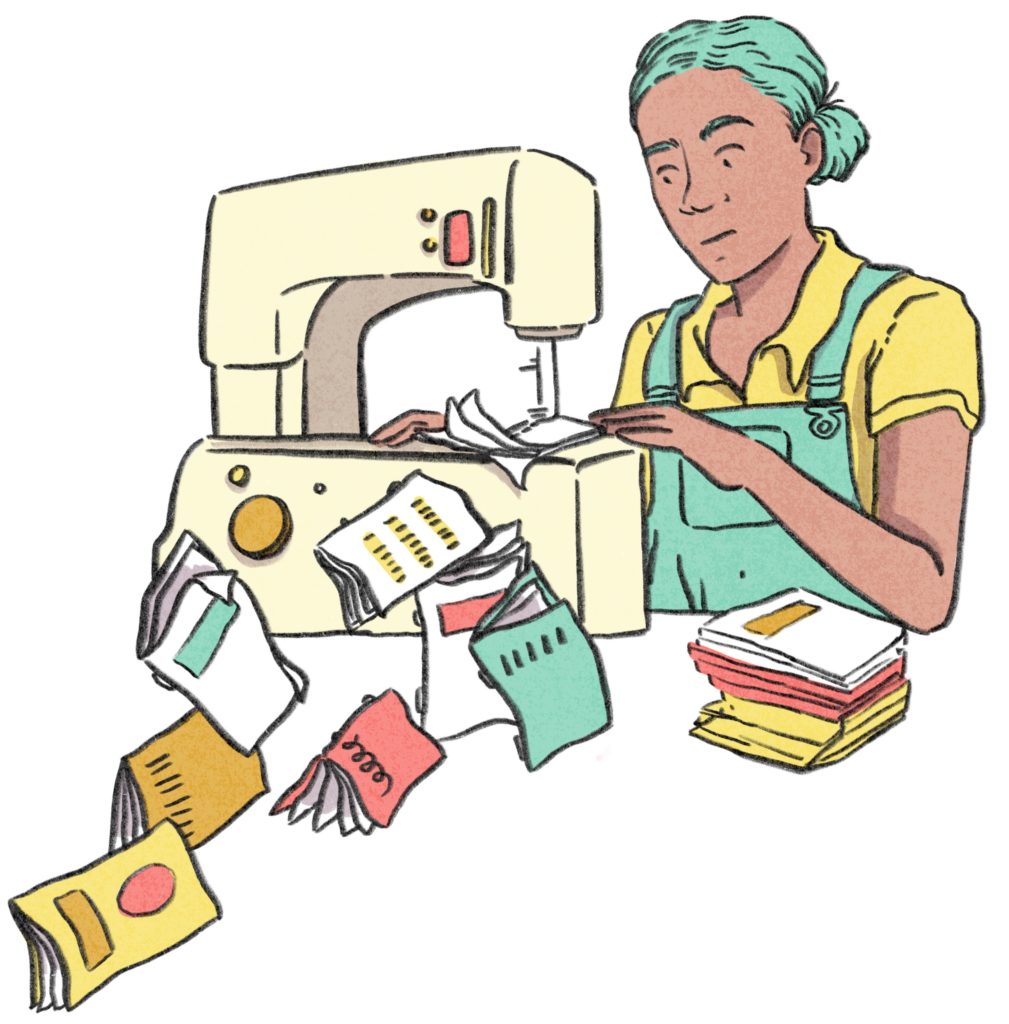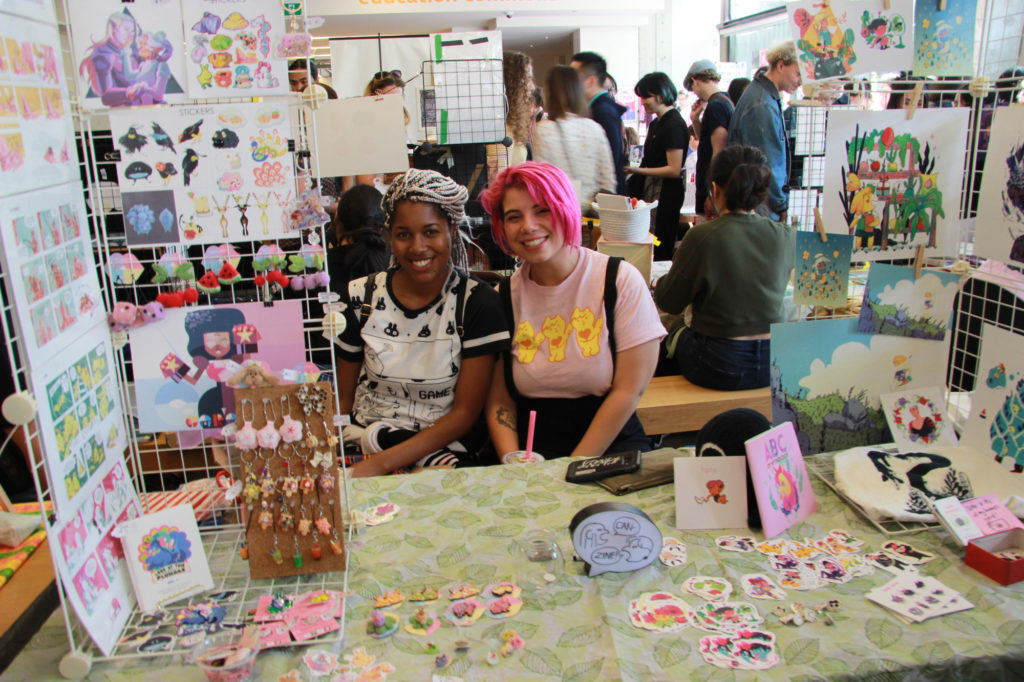
Most creators prefer to know how their products are being produced. But even with the popularity of enamel pins and the like, it isn’t so easy. We would know, because we’ve now called dozens of producers in Canada and the U.S. to get to the bottom of where their pins are manufactured. When we ask directly, the answer tends to be this: a slight pause, a clearing of the throat, and mumble of the word “overseas.” Regardless of whether the company has a name like Eco-Friendly Panda with a website full of graphics claiming “MADE IN USA.” Once we get someone on the phone, they always confirm that, while small batches are made domestically, larger orders are all handled in China.
The fact is, North American factories can’t compete with the cheap, mass production available abroad. As a result, more than 90% of pin production takes place in Asia. In some cases, ordering a batch of accessories comes at the cost of human exploitation, not to mention gas-guzzling global shipping.
Of course, let’s avoid generalizing. Not all Asian factories will have bleak working conditions, and there are manufacturers emerging worldwide that preach values around sustainability and ethics. But the popular narrative of cruel sweatshop factories in developing countries has, unfortunately, been frequently borne out by journalism, activism and lived testimonials.
Yeah, bummer. So where does that leave the indie creator? No one likes the idea of profiting off of from global inequities just to source some cute custom pins. But artists also have to support themselves by creating and selling work within reasonable costs and pricing.
Well, there are a few options:
The first, stick to small batches that you know are made domestically.
Second, DIY for life! Making your accessories by hand may seem daunting, but plenty of folks use resin, ceramics, or other materials to do just that. Plus, there’s nothing like homemade swag!
Lastly, falling short of actually visiting factories in China, you can investigate possible manufacturers and ask other creators about any good leads on ethical sources. Plenty of patch and pin pals are already making the increased effort to research these social impacts.
[/column] Finding your balance
Finding your balance
Making and selling beautiful wearable objects is not always so straightforward. Artists need to produce work they can reasonably sell for profit, but may also want to consider ethical production practices before picking the cheapest options first.
Here’s a non-judgmental thought exercise you can use to figure out where you land. Answer the questions below and figure out what matters to you most. We hope you can find the sweet spot for your own projects, especially if your production or printing is done by a third party.
Of course, the balance each artist finds will be unique to their own context, work, and approach. This may also be a useful check-in for fans and collectors of artist-made accessories.
The Ethical Artist’s Work-(-It-Out) Sheet
for Pins, Patches & Accessories
✪ Where does the production happen?
✪ What do you know about the facilities?
✩ What don’t you know? (e.g. labour conditions, pay, safety, environmental or economic impact)
✪ Is the manufacturer open and willing to communicate?
✪ What’s the environmental impact?
✩ How far does the product have to travel to reach you or a customer?
✪ What material is it made of?
✪ Is it biodegradable, recyclable, affordable?
✪ What resources are used, and what is the impact? Does production involve animal products or animal testing?
✪ What other options are available? (e.g. Have small batches produced locally, make it yourself, adapt the design to make it by hand, etc.)
✪ If you’re considering alternative production options, think of…
✩ What can you reasonably afford to spend and still make a profit?
✩ What’s the limit on your mark-up/ pricing before people aren’t able to afford your items?
✩ Will your audience be appreciative of these considerations if you advertise them? Will they be more willing to spend a bit more?
✪ Accessories and zine fairs sometimes jive, sometimes less so. Where are you planning to sell your pin, patch, or other fun thing?
✩ If you’re selling it at a zine, comic, or art book fair, do they have a policy about selling non-print items?
✩ Can you ask other folks you know how much non-zine stuff is okay to table in their experience?
Talking Transparency
Who Made This and Who Made That?
From pin and patch shows to zine fairs, there’s never been a greater selection of cute adornments to choose from. While many vendors only sell their own designs, others take the distro approach popularized by zine culture and offer a catalogue that includes work made by other creators. Some folks think of themselves more as thematic shops, and include work from a variety of media and origins. Even mass-produced goodies may land on the table, if they fit in the scope of their offerings. There’s no judgement in selling other people’s work per se — after all, a lot of people just want to buy cute or interesting stuff at the end of the day.
Whatever your approach, transparency and communication are key.
Do you table pop culture pins that you buy in bulk online? Perhaps your project’s title could reflect that! Something like, “Fuzzy Peaches Cute Shop and Reseller.”
Do you sell other people’s zines or pins? Think about adding a sticker or placard that explains that certain pieces are “Work by my friends!” with a list of artist names.
In any case, there are two main points:
- Artists always deserve credit for their work.
- Shoppers and vendors alike want to know what stuff you personally made, and what you’re simply selling as a part of your outfit. Once you’ve communicated these two things, you’ll know you’re doing right by your customers, your peers, and yourself.
Now let’s sell some stuff!
